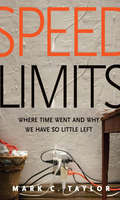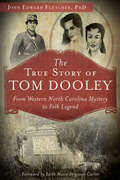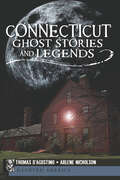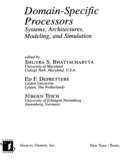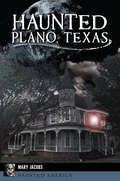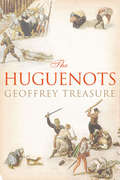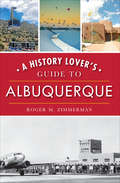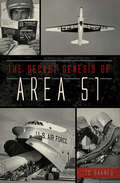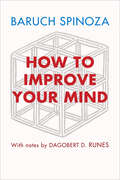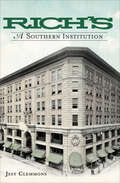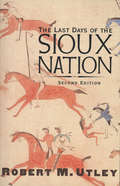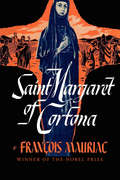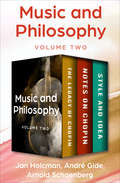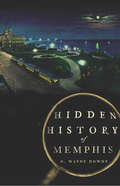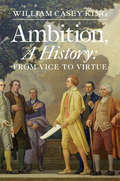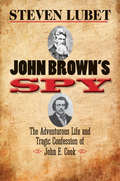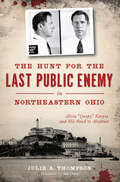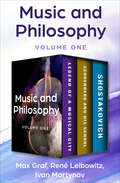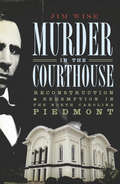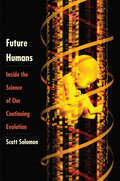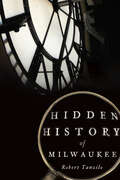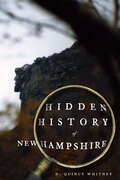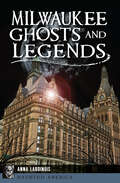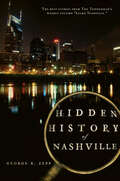- Table View
- List View
Speed Limits: Where Time Went and Why We Have So Little Left
by Mark C. TaylorA contemplation on &“the durability of our fast-tracked, multitasked modern world . . . a stimulating cautionary report for the digital age.&”—Kirkus Reviews We live in an ever-accelerating world: faster computers, markets, food, fashion, product cycles, minds, bodies, kids, lives. When did everything start moving so fast? Why does speed seem so inevitable? Is faster always better? Drawing together developments in religion, philosophy, art, technology, fashion, and finance, Mark C. Taylor presents an original and rich account of a great paradox of our times: how the very forces and technologies that were supposed to free us by saving time and labor now trap us in a race we can never win. The faster we go, the less time we have, and the more we try to catch up, the farther behind we fall. Connecting our speed-obsession with today&’s global capitalism, he composes a grand narrative showing how commitments to economic growth and extreme competition, combined with accelerating technological innovation, have brought us close to disaster. Psychologically, environmentally, economically, and culturally, speed is taking a profound toll on our lives. By showing how the phenomenon of speed has emerged, Taylor offers us a chance to see our pace of life as the product of specific ideas, practices, and policies. It&’s not inevitable or irreversible. He courageously and movingly invites us to imagine how we might patiently work towards a more deliberative life and sustainable world. &“With panache and flashes of brilliance, Taylor, a Columbia University religion professor and cultural critic, offers a philosophically astute analysis of how time works in our era.&” —Publishers Weekly
The True Story of Tom Dooley: From Western North Carolina Mystery to Folk Legend (True Crime Ser.)
by John Edward FletcherThe crime that shocked post-Civil War America and inspired the folk song that became The Kingston Trio&’s hit, &“Tom Dooley.&” At the conclusion of the Civil War, Wilkes County, North Carolina, was the site of the nation&’s first nationally publicized crime of passion. In the wake of a tumultuous love affair and a mysterious chain of events, Tom Dooley was tried, convicted and hanged for the murder of Laura Foster. This notorious crime became an inspiration for musicians, writers and storytellers ever since, creating a mystery of mythic proportions. Through newspaper articles, trial documents and public records, Dr. John E. Fletcher brings this dramatic case to life, providing the long-awaited factual account of the legendary murder. Join the investigation into one of the country&’s most enduring thrillers. &“Fletcher has spent a great deal of time researching almost all of the characters involved with the Foster homicide and has gone further than any researcher I know in establishing the relationships—blood, marriage and social—between the major actors in the tragedy.&”—Statesville Record & Landmark
Connecticut Ghost Stories and Legends (Haunted America)
by Thomas D'Agostino Arlene NicholsonThe collaborators of A Guide to Haunted New England track the spirits of the &“Constitution State&” through its storied history. The emerald sheen illuminating the Sabbatarian burying ground, 8 Mile River&’s misty figures which emerge at the Devil&’s Hopyard, and flying demon skeletons on Charles Island—these bizarre haunts are uniquely Connecticut. In the ghostly lore of the state, the ambient ramblings of the Leatherman still ring out in the caves of Harwinton&’s forests and the former residents of the Hale Homestead continue to roam the attic at night. Join authors and Paranormal United Research Founders, Thomas D&’Agostino and his wife Arlene Nicholson, as they recount bone chilling mysteries from Putnam, Canton, New London and many more shadowy corners of the Nutmeg state. Includes photos! Praise for A Guide to Haunted New England &“Fun, charming . . . includes not only locales with reported ghosts, but also sites with macabre (though not haunted) histories.&”—True Crime Librarian &“Anyone interested in exploring the haunted, macabre and abandoned throughout New England knows they can count on D&’Agostino to find out more about the site&’s history, past sightings and how to find them.&”—Mobile RVing
Domain-Specific Processors: Systems, Architectures, Modeling, and Simulation (Signal Processing and Communications #Vol. 20)
by Jürgen Teich Ed F. Deprettere Shuvra S. BhattacharyyaRanging from low-level application and architecture optimizations to high-level modeling and exploration concerns, this authoritative reference compiles essential research on various levels of abstraction appearing in embedded systems and software design. It promotes platform-based design for improved system implementation and modeling and enhanced performance and cost analyses. Domain-Specific Processors relies upon notions of concurrency and parallelism to satisfy performance and cost constraints resulting from increasingly complex applications and architectures and addresses concepts in specification, simulation, and verification in embedded systems and software design.
Haunted Plano, Texas (Haunted America)
by Mary JacobsFrom goat men to witch ladies and spooky little girls, dive into the haunted history of Plano, Texas. Plano's old homes and businesses are rife with haunted history. Explore eerie urban legends like the Goat Man, the Clown Threat, and Ranch 111, where devil worshipers performed their rituals. The Evaporating Apparition spooked the staff at the Art Centre Theatre, while the grumpy spirit of an old rancher stalks the Masonic Lodge. Some specters are harmless, such as the Giggling Ghost, a little girl in the Cox Building with a penchant for peanut butter and pranks. Other figures own a more sinister reputation. The Witch Lady of Plano was feared by city youth and monitored by the FBI. Mary Jacobs examines the ghostly fallout of Plano's darkest moments, from the smallpox epidemic to the gruesome Muncey family murders.
The Huguenots
by Geoffrey TreasureFrom the author of Louis XIV, an unprecedented history of the entire Huguenot experience in France, from hopeful beginnings to tragic diaspora. Following the Reformation, a growing number of radical Protestants came together to live and worship in Catholic France. These Huguenots survived persecution and armed conflict to win—however briefly—freedom of worship, civil rights, and unique status as a protected minority. But in 1685, the Revocation of the Edict of Nantes abolished all Huguenot rights, and more than 200,000 of the radical Calvinists were forced to flee across Europe, some even farther. In this capstone work, Geoffrey Treasure tells the full story of the Huguenots&’ rise, survival, and fall in France over the course of a century and a half. He explores what it was like to be a Huguenot living in a &“state within a state,&” weaving stories of ordinary citizens together with those of statesmen, feudal magnates, leaders of the Catholic revival, Henry of Navarre, Catherine de&’ Medici, Louis XIV, and many others. Treasure describes the Huguenots&’ disciplined community, their faith and courage, their rich achievements, and their unique place within Protestantism and European history. The Huguenot exodus represented a crucial turning point in European history, Treasure contends, and he addresses the significance of the Huguenot story—the story of a minority group with the power to resist and endure in one of early modern Europe&’s strongest nations. &“A formidable work, covering complex, fascinating, horrifying and often paradoxical events over a period of more than 200 years…Treasure&’s work is a monument to the courage and heroism of the Huguenots.&”—Piers Paul Read, The Tablet
The Great Plague: A People's History
by Evelyn LordFocusing on Britain&’s peasants, shopkeepers, and other commoners, this history of the deadly Black Plague is a &“local account of the countrywide calamity&” (The Times). In this intimate history of the extraordinary Black Plague pandemic that swept through the British Isles in 1665, Evelyn Lord focuses on the plague&’s effects on smaller towns, where every death was a singular blow affecting the entire community. Lord&’s fascinating reconstruction of life during plague times presents the personal experiences of a wide range of individuals, from historical notables Samuel Pepys and Isaac Newton to common folk who tilled the land and ran the shops. The Great Plague brings this dark era to vivid life—through stories of loss and survival from those who grieved, those who fled, and those who hid to await their fate. Includes maps, photos, and illustrations
A History Lover's Guide to Albuquerque
by Roger M. ZimmermanA landmark-by-landmark tour of New Mexico&’s largest city, with photos and facts on its fascinating past. This tour of Albuquerque, New Mexico, goes beyond the traditional guidebook to offer a historical journal detailing an area rich with diverse cultures and dramatic events. The journey through time starts with the settlement of Native Americans in pueblos along the Rio Grande and then initiatives by Spain to settle and convert the region. Visit Old Town Plaza, where trade from the El Camino Real and Santa Fe Trails flourished. Look around lesser-known sites, including railroad depot facilities, major military landmarks and nostalgic Route 66. Join local history expert Roger Zimmerman as he carefully curates an expedition through each era of Albuquerque&’s history and its most beloved sites
The Secret Genesis of Area 51 (Military Ser.)
by TD BarnesThe man &“who has done more than anyone to lift the veil of secrecy . . . about what&’s unfolded out there in the desert&” reveals the origins of Area 51 (KLAS 8 News Now). In 1955, the Central Intelligence Agency established a clandestine base of operations in the Nevada desert with a mission to protect the United States from a growing communist threat. Special projects at Area 51 were shrouded in mystery, and the first was one of the world&’s most famous spy planes, the U-2. It fueled half-truths, rumors and legends for more than half a century. Now with many details of that endeavor declassified, the real story can finally be told. Author and Area 51 veteran TD Barnes sifts fact from fiction in one of America&’s most protected origin stories.
How to Improve Your Mind
by Baruch SpinozaThe Enlightenment thinker asserts that mental tranquility is achieved through knowledge of God in this brief philosophical treatise.Seventeenth-century philosopher Baruch Spinoza was one of the most original and important thinkers of his time. His magnum opus, Ethics, influenced generations of great minds from Karl Marx to Ludwig Wittgenstein and George Santayana. In this earlier work, Spinoza articulates his view that life is best lived with the supreme happiness of knowing God&’s infinite love. By extension, all earthly pursuits—including money, fame, and sex—are mere distractions from the greater joy of the soul&’s quietude. This edition of How to Improve Your Mind is translated by the philosopher and founder of the Philosophical Library, Dagobert D. Runes. Runes also provides exclusive commentary and biographical notes.
Rich's: A Southern Institution (Landmarks)
by Jeff ClemmonsThe storied history of the iconic Atlanta department store. In 1867, less than three years after the Civil War left the city in ruins, Hungarian Jewish immigrant Morris Rich opened a small dry goods store on what is now Peachtree Street in downtown Atlanta, Georgia. Over time, his brothers Emanuel and Daniel joined the business; within a century, it became a retailing dynasty. Join historian Jeff Clemmons as he traces Rich's 137-year history. For the first time, learn the true stories behind Penelope Penn, Fashionata, The Great Tree, the Pink Pig, Rich's famous coconut cake and much more, including how events at the downtown Atlanta store helped John F. Kennedy become America's thirty-fifth president. With an eye for accuracy and exacting detail, Clemmons recounts the complete history of this treasured southern institution. &“Jeff Clemmons offers an interesting, thoughtful and thorough history of how Morris Rich and his brothers and their family offered Atlanta legendary customer service generosity and goods, as well as lifetime of dedicated community action and investment.&” —Mary Hood, author of How Far She Went &“For the first time, Clemmons gives an accurate, matter-of-fact account of the civil rights movement in Atlanta as it pertains to crashing the gates of Rich's.&” —Lonnie King, civil and human rights activist &“An excellent new source of information about Atlanta's favorite store...well written. Well worth a read.&” —Anthony Montag, great-grandson of Rich&’s founder, Morris Rich
The Last Days of the Sioux Nation: Second Edition (The Lamar Series in Western History)
by Robert M. UtleyThis award-winning history of the Sioux in the 19th century ranges from its forced migration to the reservation to the Wounded Knee Massacre. First published in 1963, Robert M. Utley&’s classic study of the Sioux Nation was a landmark achievement in Native American historical research. The St. Louis Dispatch called it &“by far the best treatment of the complex and controversial relationship between the Sioux and their conquerors yet presented and should be must reading for serious students of Western Americana.&” Today, it remains one of the most thorough and accurate depictions of the tragic violence that broke out near Wounded Knee Creek on December 29th, 1890. In the preface to this second edition, western historian Robert M. Utley reflects on the importance of his work and changing perspectives on Native American history. Acknowledging the inaccuracy of his own title, he points out that &“Wounded Knee did not represent the end of the Sioux tribes…It ended one era and open another in the lives of the Sioux people.&” Winner of the Buffalo Award
Saint Margaret of Cortona
by François MauriacThe Nobel Prize–winning author&’s stirring biography of the thirteenth-century Italian penitent who become the patron saint of the homeless. Born in 1247 to a farming family in a small village outside Perugia, Margaret of Cortona was willful and reckless in her youth. At age seventeen, she became a wealthy man&’s mistress—even bearing his son out of wedlock. But her life of sin ended when she found her lover murdered. Devoting herself to prayer and penance, Margaret eventually joined the Third Order of St. Francis and took a vow of poverty. She established a hospital for the poor and homeless at Cortona. On divine command, she challenged her own bishop for his lavish and warlike lifestyle. Canonized by Pope Benedict XIII in 1728, she became a patron saint of the downtrodden, including the falsely accused, homeless, orphaned, and mentally ill, as well as midwives, penitents, single mothers, reformed prostitutes, and third children. For François Mauriac, Saint Margaret of Cortona became a source of fascination and solace during the Nazi occupation of France. During that time, feeling himself and all his countrymen to be among the downtrodden, he wrote this biography.
Music and Philosophy Volume Two: The Legacy of Chopin, Notes on Chopin, and Style and Idea
by André Gide Jan Holcman Arnold SchoenbergThese three texts explore the power and potential of music by a renowned musicologist, a celebrated composer, and a Nobel Prize–winning author. Jan Holcman&’s The Legacy of Chopin is a comprehensive study of the great composer&’s views on music—including pianism, composition, pedagogy, criticism, and more. Drawing on extensive research from a wide range of sources, Holcman provides essential historical and musicological context for Frederic Chopin&’s references and concepts, making his more esoteric ideas accessible to the general reader. Nobel Prize winning author and devoted pianist André Gide presents inspiring discourse on the power of Chopin&’s music in Notes on Chopin. Gide depicts Chopin as a composer &“betrayed . . .deeply, intimately, totally violated&” by a music community that had fundamentally misinterpreted his work. Notes is a moving and poetic expression of profound admiration for a pioneering composer, and this edition includes rare pages and fragments from Gide&’s journals. In Style and Idea, Austrian composer and music theorist Arnold Schoenberg presents his vision of how music speaks to us and what it is capable of saying. Through a series of essays, Schoenberg discusses the relationship between music and language, new and outmoded music, composition in twelve tones, entertaining through composing, the relationship of heart and mind in music, evaluation of music, and other topics.
Hidden History of Memphis (Hidden History)
by G. Wayne DowdyA tour of the Tennessee city filled with famous faces, fascinating trivia, and forgotten lore—plus a former mayor&’s previously unpublished private papers. Step inside the fascinating annals of the Bluff City's history and discover the Memphis that only few know. G. Wayne Dowdy, longtime archivist for the Memphis Public Library, examines the history and culture of the Mid-South during its most important decades. Well-known faces like Clarence Saunders, Elvis Presley, and W.C. Handy are joined by some of the more obscure characters from the past, like the Memphis gangster who inspired one of William Faulkner's most famous novels; the local Boy Scout who captured German spies during World War I; the Memphis radio station that pioneered wireless broadcasting; and so many more. Also included are the previously unpublished private papers and correspondence of former mayor E.H. Crump, giving us new insight and a front-row seat to the machine that shaped Tennessee politics in the twentieth century. Includes photos
Ambition, A History: From Vice to Virtue
by William Casey KingIs &“ambitious&” a compliment? It depends: &“[A] masterpiece of intellectual and cultural history.&”—David Brion Davis, author of Inhuman Bondage: The Rise and Fall of Slavery in the New World From rags to riches, log house to White House, enslaved to liberator, ghetto to CEO, ambition fuels the American Dream. Yet at the time of the nation's founding, ambition was viewed as a dangerous vice, everything from &“a canker on the soul&” to the impetus for original sin. This engaging book explores ambition&’s surprising transformation, tracing attitudes from classical antiquity to early modern Europe to the New World and America&’s founding. From this broad historical perspective, William Casey King deepens our understanding of the American mythos and offers a striking reinterpretation of the introduction to the Declaration of Independence. Through an innovative array of sources and authors—Aquinas, Dante, Machiavelli, the Geneva Bible, Marlowe, Shakespeare, Thomas Jefferson, and many others—King demonstrates that a transformed view of ambition became possible the moment Europe realized that Columbus had discovered not a new route but a new world. In addition the author argues that reconstituting ambition as a virtue was a necessary precondition of the American republic. The book suggests that even in the twenty-first century, ambition has never fully lost its ties to vice and continues to exhibit a dual nature—positive or negative depending upon the ends, the means, and the individual involved.
John Brown's Spy: The Adventurous Life and Tragic Confession of John E. Cook
by Steven LubetA &“compulsively readable&” account of the fugitive who betrayed John Brown after the bloody abolitionist raid on Harper&’s Ferry (Booklist, starred review).John Brown&’s Spy tells the nearly unknown story of John E. Cook, the person John Brown trusted most with the details of his plans to capture the Harper&’s Ferry armory in 1859. Cook was a poet, a marksman, a boaster, a dandy, a fighter, and a womanizer—as well as a spy. In a life of only thirty years, he studied law in Connecticut, fought border ruffians in Kansas, served as an abolitionist mole in Virginia, took white hostages during the Harper&’s Ferry raid, and almost escaped to freedom. For ten days after the infamous raid, he was the most hunted man in America with a staggering one-thousand dollar bounty on his head.Tracking down the unexplored circumstances of John Cook&’s life and disastrous end, Steven Lubet is the first to uncover the full extent of Cook&’s contributions to Brown&’s scheme. Without Cook&’s participation, the author contends, Brown might never have been able to launch the insurrection that foreshadowed the Civil War. Had Cook remained true to the cause, history would have remembered him as a hero. Instead, when Cook was captured and brought to trial, he betrayed John Brown and named fellow abolitionists in a full confession that earned him a place in history&’s tragic pantheon of disgraced turncoats.&“Lubet is especially effective at capturing the courtroom drama . . . A crisply told tale fleshing out one of American history&’s more intriguing footnotes.&” —Kirkus Reviews&“Take[s] readers on a ride through the frantic days surrounding Brown&’s raid that will make them &‘feel&’ the moment as much as understand it.&” —Library Journal (starred review)
The Hunt for the Last Public Enemy in Northeastern Ohio: Alvin "Creepy" Karpis and his Road to Alcatraz (True Crime Ser.)
by Julie ThompsonThis Depression Era true crime biography chronicles the notorious gangster&’s life, eventual capture by the FBI, and long stay in Alcatraz. Growing up in Topeka, Kansas, Alvin Karpis started his life of crime at age ten. By the early 1930s, he was a hardened criminal and leader of the Barker-Karpis Gang. He reportedly committed fifteen bank robberies, fourteen murders, three jailbreaks and two kidnappings. One of only four outlaws to be named Public Enemy No. 1, Karpis was the last—and the only one taken alive. His criminal career came to an end when J. Edgar Hoover and his famed G-Men apprehended him in New Orleans. From there, Karpis found himself confined on Alcatraz Island, where he spent nearly twenty-six years—more than any inmate in the prison's history. This riveting tale of his life takes readers from the rural Midwest to the bustling streets of the Big Easy and into the bleak innards of "the Rock."
Music and Philosophy Volume One: Legend of a Musical City, Schoenberg and His School, and Shostakovich
by Max Graf Ivan Martynov René LeibowitzThese three essential volumes on classical music theory and history explore the lives and contributions of some of music&’s greatest minds.In Legend of a Musical City: The Story of Vienna, renowned Austrian music critic Max Graf shares his recollections of life with Anton Bruckner, Gustav Mahler, Johannes Brahms, Richard Strauss, Arnold Schoenberg, and other immortals of the music world. Bringing to life several iconic composers as well as the city of Vienna itself, Graf recounts a charming, personal, and highly educational story of Austria&’s musical legacy.In Schoenberg and His School, noted composer, conductor, and music theorist René Leibowitz offers an authoritative analysis of Schoenberg&’s groundbreaking contributions to composition theory and Western polyphony. In addition to detailing his subject&’s major works, Leibowitz also explores Schoenberg&’s impact on the works of his two great disciples, Alban Berg and Anton Webern. In Shostakovich: The Man and His Work, Ivan Martynov presents a compelling and intimate biography of this pioneering legend. Martynov draws on extensive research, including interviews and conversations with Shostakovich himself, as well as his own expertise in the field of musicology.
Murder in the Courthouse: Reconstruction & Redemption in the North Carolina Piedmont (True Crime Ser.)
by Jim WiseAn in-depth look at the historic murder of an infamous politician during America&’s Reconstruction following the Civil War. No suspect was ever indicted or tried for the murder of scalawag politician John W. &“Chicken&” Stephens in a North Carolina courthouse; and the Ku Klux Klan not only rid itself of a troublesome adversary, but also set up a showdown between the state&’s old guard and the radical regime of Governor William Woods Holden. Follow this little-known tale from the murder, through the &“Kirk-Holden War,&” through the courts and to the finale, when Holden became the United States&’ first governor impeached and removed from office. Newspaper reporter and historical columnist Jim Wise takes us beyond the final days of the Civil War in North Carolina, amidst the destruction and poverty and debt, to chronicle the men whose clashing agendas and personalities shaped a violent era and laid foundations for the Jim Crow century to come.
Future Humans: Inside the Science of Our Continuing Evolution
by Scott SolomonAn evolutionary biologist provides surprising insights into the changing nature of Homo sapiens in this &“important and an entertaining read" (Choice). In Future Humans, evolutionary biologist Scott Solomon draws on recent discoveries to examine the future evolution of our species. Combining knowledge of our past with current trends, Solomon offers convincing evidence that evolutionary forces are still affecting us today. But how will modernization—including longer lifespans, changing diets, global travel, and widespread use of medicine and contraceptives—affect our evolutionary future? Solomon presents an entertaining and accessible review of the latest research on human evolution in modern times, drawing on fields from genomics to medicine and the study of our microbiome. Drawing together topics ranging from the rise of online dating and Cesarean sections to the spread of diseases such as HIV and Ebola, Solomon suggests that we are entering a new phase in human evolutionary history—one that makes the future less predictable and more interesting than ever before.
Hidden History of Milwaukee (Hidden History)
by Robert TanziloJoin a local history expert for an exclusive behind-the-scenes tour of Milwaukee&’s incredible past. Sail out to the Breakwater Lighthouse, scramble up the wings of the Milwaukee Art Museum, and dig up the city&’s roots on the corner of Water Street and Wisconsin Avenue. Seize the chance to do a little urban spelunking and explore basilicas, burial grounds, and breweries. Ring the bell in the city hall tower, and take a turn around the secret indoor track at a Montessori school. No space is off limits in these untold stories of the Cream City's most familiar places and celebrated landmarks, from Bobby Tanzilo of the popular OnMilwaukee website. Includes photos!
Hidden History of New Hampshire (Hidden History)
by D. Quincy WhitneyA collection of colorful stories about some of New Hampshire&’s most notable newsmakers and remarkable historic events. Includes photos. Hidden in the cracks and crevices of the Granite State are the stories of pioneers who pursued their passions, creating legacies along the way. Compiled by a Smithsonian researcher and former Boston Globe contributor, this treasury includes tales of: the mountain man who became an innkeeperthe &“Bird Man&” who took his passion to the White Housethe gentleman who ascended the highest peak in the Northeast in a steam-powered locomobilethe story of one skier&’s dramatic win at the 1939 &“American Inferno&” Mount Washington racethe Shaker Meetinghouse, built in just one day, in complete silencethe gallant efforts to save the Old Man of the Mountainand much more
Milwaukee Ghosts and Legends (Haunted America)
by Anna LardinoisA tour guide and founder of Gothic Milwaukee shares the spine-tingling tales of the Beer City's famous, and not so famous, specters and legends. Beneath Milwaukee's calm façade, its ghastly past awaits. The overbearing spirit of Frederick Pabst keeps persistent watch over the mansion that shares his name. The remains of the Newhall House Fire, the city's deadliest disaster, may lie beneath a new building, but those who lost their lives that night refuse to rest in peace. Even the suburbs hold their share of ghoulish secrets, including the furtive dwarves of Haunchyville, the fabled Bray Road Beast and the stubborn spirits lurking in Deacon West's house. &“A breeze—a spine-tingling breeze—to read. It's extremely well crafted, organized into deliciously digestible segments and laden with descriptive yet straight-forward language. Lardinois stocks the stories with so many peculiar historical tidbits that the text is simultaneously scary, fascinating and educational. (Did you know the ashes of the founder of The Skylight Theater are still beneath the stage?)&” —OnMilwaukee.com
Hidden History of Nashville: The Best Stories From The Tennessean's Weekly Column "Learn Nashville" (Hidden History)
by George R ZeppThis collection uncovers the fascinating past of Tennessee&’s legendary Music City from true tall tales to larger than life characters and much more. Perched on the banks of the Cumberland River, Nashville is best known for its role in the civil rights movement, world-class education and, of course, country music. In this unique collection of columns written for The Tennessean, journalist and longtime Tennessee native George Zepp illuminates a less familiar side of the city&’s history. Here, readers will learn the secrets of Timothy Demonbreun, one of the city's first residents, who lived with his family in a cliff-top cave; Cortelia Clark, the blind bluesman who continued to perform on street corners after winning a Grammy award; and Nashville's own Cinderella story, which involved legendary radio personality Edgar Bergen and his ventriloquist protegee. Based on questions from readers across the nation, these little-known tales abound with Music City mystery and charm.
